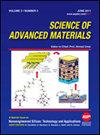Polyethylene Glycol Diacrylate (PEGMA) and Polyvinylpyrrolidone (PVP) Delivering Solifenacine as Super Smooth Coating of Ureteral Stent to Relieve Stent Syndrome: In Vitro and In Vivo Study
IF 0.9
4区 材料科学
引用次数: 0
Abstract
Urinary calculus is a very common disease in urology. Ureteral stent is popularly used in patients after surgeries to protect the ureter. Indwelling ureteral stent inevitably causes stent syndrome for the reason of foreign body stimulation and rough stent surface. Clinicaly, oral administration of solifenacine is a solution to relieve the symptoms, however it is with several complications. In our study, ureteral stent was coated with bioactive solifenacine in polyethylene glycol diacrylate (PEGMA) and polyvinylpyrrolidone (PVP) to realize super smooth surface and controlled release of solifenacine. Scanning electron microscopy (SEM) and friction test of solifenacin-loaded super-smooth stent (SSSS) revealed its smooth surface. Fourier transform infrared spectroscopy and controlled release test showed its solifenacin delivering and controlled releasing. The polymerase chain reaction (PCR) showed inhibited α-smooth mucle actin expression in SSSS treated smooth muscle cells. The SSSS was applied in male New Zealand rabbits and revealed the effect of inhibiting the abnormal contraction of bladders. The Histology of SSSS treated bladder revealed a diastolic muscle layer of bladder. The SSSS after implantation showed smoother surface and less calcium deposition. In conclusion, it’s demonstrated that the SSSS has the efficacy of relieving stent syndrome and potential for clinical translation and application.聚乙二醇二丙烯酸酯(PEGMA)和聚乙烯吡咯烷酮(PVP)作为输尿管支架超光滑涂层缓解支架综合征的体外和体内研究
尿路结石是泌尿外科常见的疾病。输尿管支架是手术后患者常用的保护输尿管的支架。由于异物刺激和支架表面粗糙,留置输尿管支架不可避免地会引起支架综合征。临床上,口服索非那新是缓解症状的一种解决方案,但也有一些并发症。在我们的研究中,在输尿管支架上涂上生物活性的索非那新聚乙二醇二丙烯酸酯(PEGMA)和聚乙烯吡咯烷酮(PVP),以实现索非那的超光滑表面和控制释放。扫描电子显微镜(SEM)和摩擦试验显示索非那新超光滑支架(SSSS)表面光滑。傅立叶变换红外光谱及控释实验表明其具有索非那新的缓释作用。聚合酶链式反应(PCR)显示SSSS处理的平滑肌细胞中α-光滑粘液肌动蛋白的表达受到抑制。将SSSS应用于雄性新西兰兔,显示了抑制膀胱异常收缩的效果。SSSS治疗的膀胱的组织学显示膀胱有一层舒张性肌肉层。植入后的SSSS显示出更光滑的表面和更少的钙沉积。总之,表明SSSS具有缓解支架综合征的疗效,并具有临床推广应用的潜力。
本文章由计算机程序翻译,如有差异,请以英文原文为准。
求助全文
约1分钟内获得全文
求助全文
来源期刊

Science of Advanced Materials
NANOSCIENCE & NANOTECHNOLOGY-MATERIALS SCIENCE, MULTIDISCIPLINARY
自引率
11.10%
发文量
98
审稿时长
4.4 months
 求助内容:
求助内容: 应助结果提醒方式:
应助结果提醒方式:


